Japonica Logos, Kanji Origins
December 13th's Tamori's Japonica Logos featured origins of kanji.
As many know, kanji began as a pictographic writing system developed by the Chinese around 3000 years ago. As as example, the kanji for "big" (dai: 大) comes from the image of man with his arms and legs outstretched (see pic below), while "turtle" (kame: 亀) comes from a depiction of a turtle's head, shell details, and tail (see pics below).
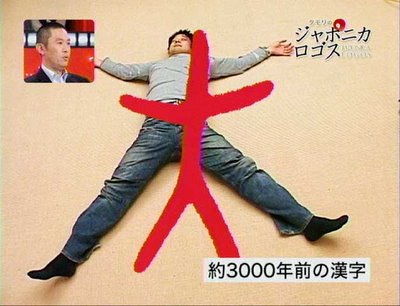
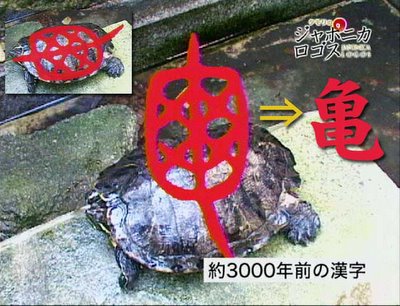
Other examples include how different graphemes are joined together to give meaning. The kanji for the fish "iwashi" 鰯 joins the kanji for "fish" (gyo/sakana: 魚) with "weak" (jaku/yowai: 弱) because the fish became suddenly weak when taken out of water. The kanji for "butterfly" 蝶 joins the kanji for "insect" (chou/mushi 虫) with "leaf" (ha: 葉) because it looked like two leaves flapping. (Pics below):
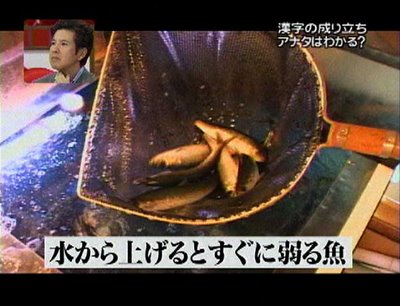
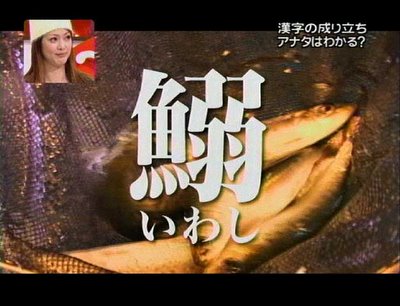
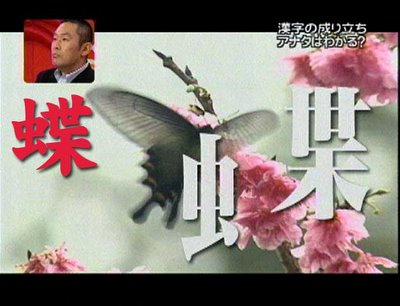
Question 1: Why is the kanji for dove/pigeon 鳩 comprised of "9" 九 and "bird" 鳥?

Question 2: The pic below shows an image of two people, but the second person is upside down. What's the kanji that was derived from this image?

Question 3: What kanji was derived from the image below? (The guests on the show was told to try to duplicate the image using their bodies)

Question 4: What kanji was derived from this concept/image? In ancient China, a man is walking through an untraversed plain or prairie; in his hand he's holding a human head?

Answers will come on another day. ^_^

0 Comments:
Post a Comment
<< Home